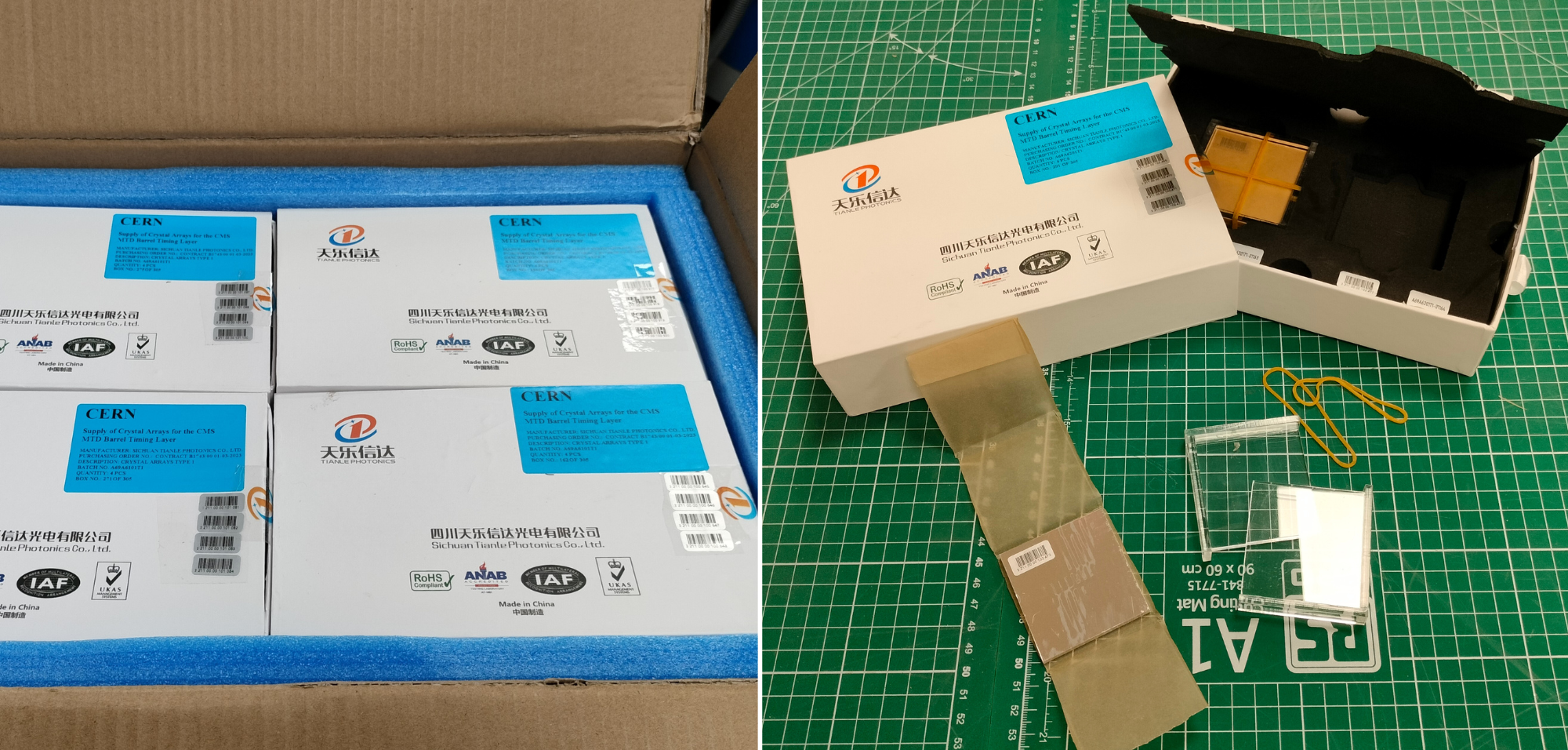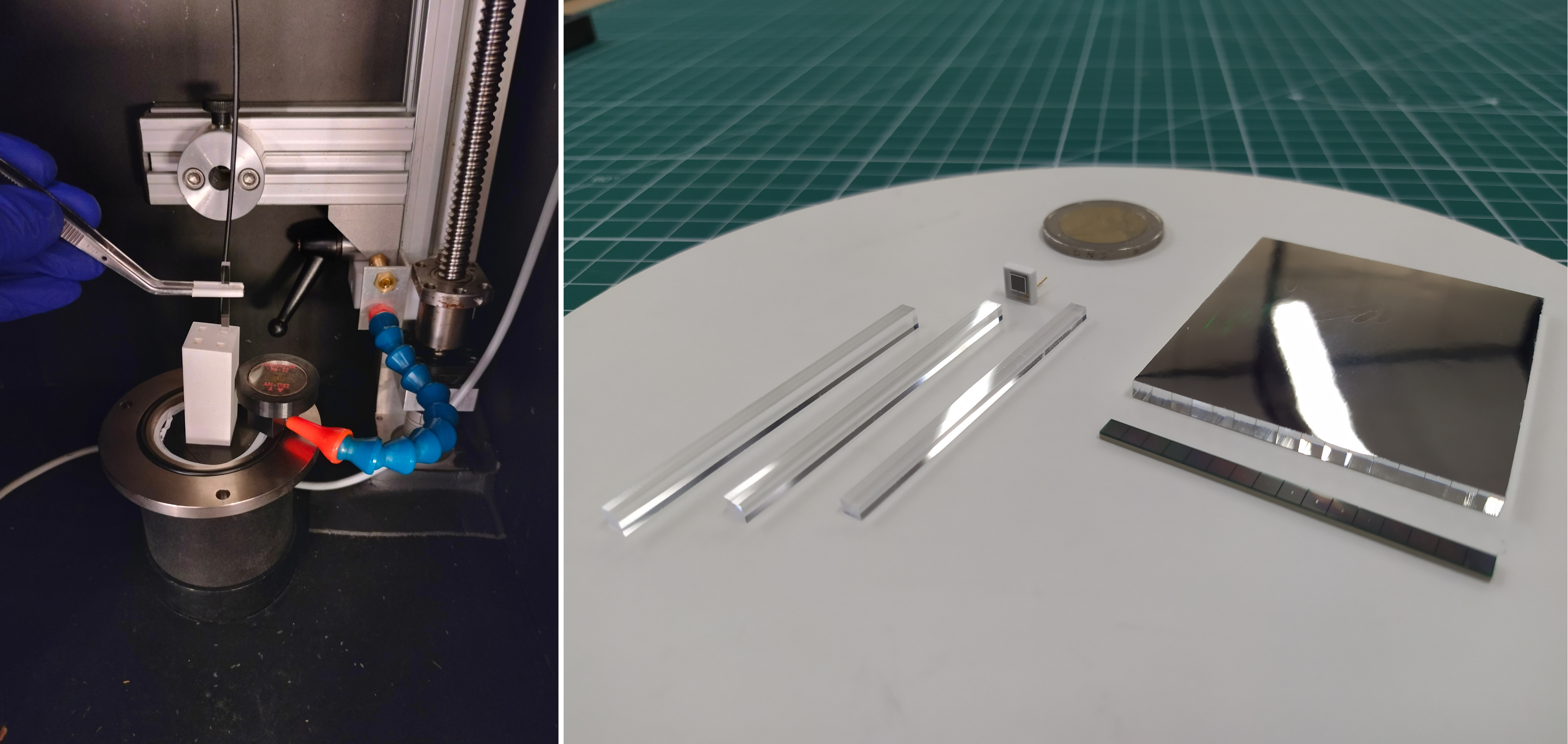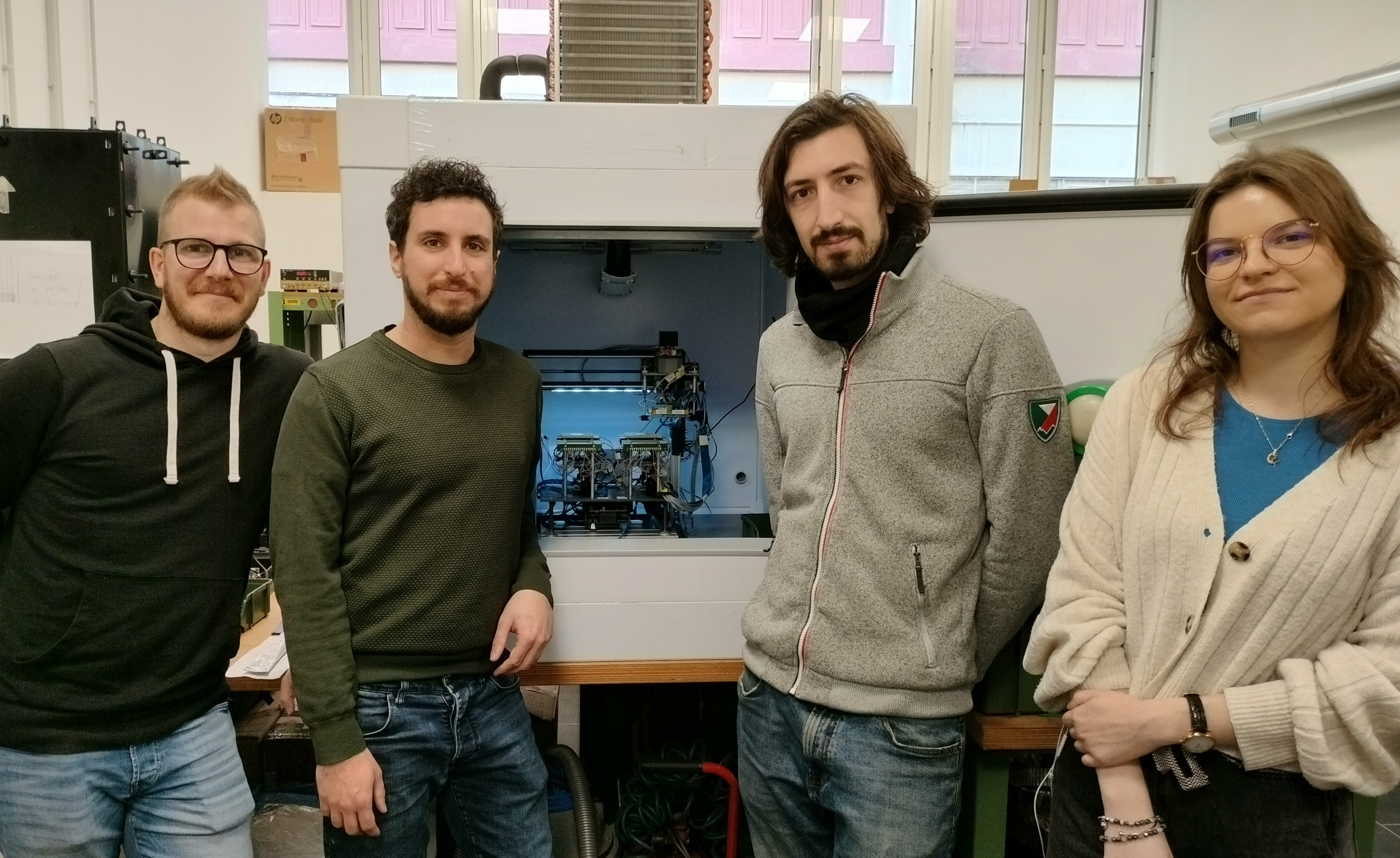
Above: Test bench for time resolution measurement of LYSO arrays coupled with SiPMs
In the last few weeks, the first batch of Ce:LYSO crystals, a type of scintillating crystals, has been delivered to the Sapienza University of Rome ready for quality assessment. This marks a significant milestone in the construction of CMS' MIP Timing Detector, the MTD. The lab, staffed by around 10 experts and students, utilizes advanced technology to meticulously evaluate the quality of the crystals, ensuring that the MTD meets the highest standards.
The construction of the MTD is part of the work being done at CMS for the High Luminosity era of the LHC. In the coming years, the LHC instantaneous luminosity is set to increase by a factor of five, leading to a higher collision rate. MTD’s role in CMS will be to measure the time-of-flight of charged particles coming from the collisions with a remarkable resolution of 30-60 picoseconds, where a picosecond is one trillionth of a second. This will unlock new possibilities for future physics searches and time-based analyses.

Above: The LYSO crystals arriving and being unpacked in Rome
Ce:LYSO scintillating crystals (Cerium-doped Lutetium-Yttrium Oxyorthosilicate) are widely used in both medical imaging applications, particularly in positron emission tomography (PET) scanners, and in High-Energy Physics. It is the fast response time of LYSO, along with its high scintillation efficiency, as well as its tolerance to radiation, that make it desirable for the building of the MTD detector.
The LYSO crystals will now be tested in Rome using sophisticated instrumentation, including photomultiplier tubes (PMT) and Silicon Photomultipliers (SiPM), to provide valuable insights into the crystal performances. The properties tested include the amount of light produced when radiation interacts with a crystal (light yield), how quickly the scintillations fade away (decay time), and whether the sensors can achieve the required level of precision (time resolution).
These upcoming tests will verify that the properties of the LYSO crystals meet the stringent requirements of the MTD.

Above Left: Test bench for light yield and decay time measurements. Scintillating light produced by photons from a Na22 radioactive source is measured with a PMT.
Above Right: Three LYSO crystals (left) and a LYSO array (right). In MTD, light from LYSO crystals is collected by SiPM arrays, the dark-grey strip shown in the picture.

Above: Some people involved in the work: Filippo Errico (INFN researcher), Claudio Quaranta (grant holder, Sapienza), Ruben Gargiulo (PhD student, Sapienza), Petra Akrap (PhD student, Sapienza).

